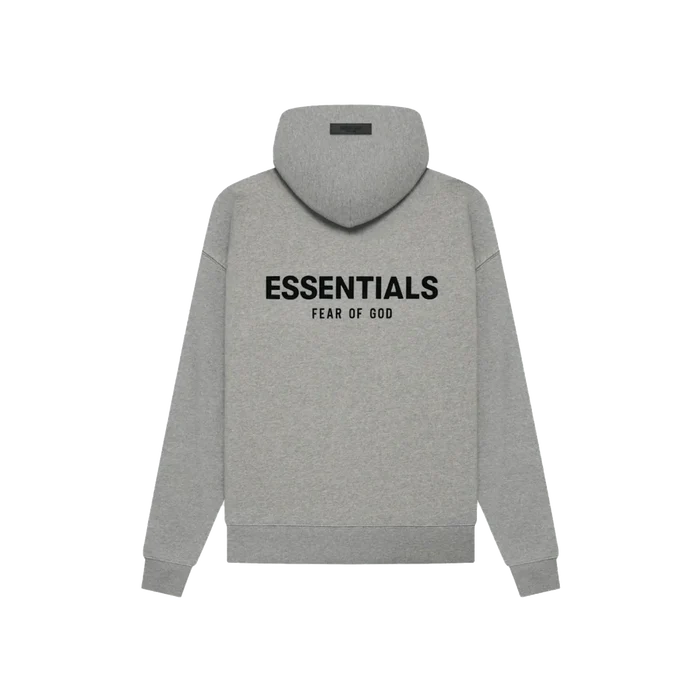In recent years, the name Essentials, has taken the fashion world by storm. From oversized hoodies spotted on celebrities to sweatpants dominating Instagram feeds, ESSENTIALS has become a household name among streetwear fans. But one question often comes up: Is ESSENTIALS a standalone brand, or is it something else?
To answer this, it’s important to explore its history, positioning in the fashion market, and cultural impact.
The Birth of ESSENTIALS
The story of Essentials hoodie begins with Jerry Lorenzo, the American designer who founded Fear of God in 2013. Fear of God quickly rose to fame as a luxury streetwear label blending high-end craftsmanship with street culture aesthetics. However, the premium price tags placed Fear of God out of reach for many admirers.
Recognizing the demand for accessible pieces, Lorenzo launched ESSENTIALS in 2018. His vision was simple: create a line of everyday wardrobe basics that maintained the essence of Fear of God while being affordable enough for a wider audience.
Thus, ESSENTIALS was born—not just as a sub-label, but as a way to democratize streetwear.
What Defines ESSENTIALS?
ESSENTIALS is best described as a diffusion line—a secondary collection derived from a high-end brand. Yet, it has grown to hold its own unique identity. Here are the defining elements:
-
Minimalist Aesthetic
-
ESSENTIALS emphasizes neutral tones like oatmeal, cream, grey, and black.
-
The designs are clean, with subtle branding that usually features the word “ESSENTIALS” in block letters.
-
-
Comfort Meets Style
-
Hoodies, T-shirts, sweatpants, and tracksuits dominate its lineup.
-
Oversized fits and soft materials make them perfect for both lounging and street styling.
-
-
Accessibility
-
Unlike luxury streetwear, ESSENTIALS is designed to be more affordable.
-
Its availability through retailers like PacSun, SSENSE, and Nordstrom makes it widely accessible.
-
Is ESSENTIALS a True Brand?
This question has two answers depending on perspective:
-
Technically: ESSENTIALS is not a standalone brand—it is a division of Fear of God, fully owned and designed under Jerry Lorenzo’s creative vision.
-
Culturally: ESSENTIALS operates as a brand in its own right. Consumers recognize it independently, resale markets treat it separately, and many who buy ESSENTIALS may not even be aware of Fear of God.
This duality is what makes ESSENTIALS fascinating. It exists both as an extension of Fear of God and as a self-sustaining label with its own fanbase.
Why ESSENTIALS Became So Popular
The rapid rise of ESSENTIALS can be attributed to several key factors:
-
Celebrity Endorsements
NBA players, rappers, and influencers regularly wear ESSENTIALS, boosting its visibility worldwide. -
The Comfort-First Era
During the pandemic, fashion shifted toward loungewear and casual fits. ESSENTIALS fit perfectly into this movement, offering cozy yet stylish pieces. -
Exclusivity Through Drops
ESSENTIALS often releases collections in limited drops, creating hype and resale demand. Items frequently sell out within hours. -
Unisex Appeal
The oversized silhouettes are designed for everyone, further widening its consumer base.
ESSENTIALS vs. Other “Essentials”
It’s important to clarify that the term “Essentials” is not unique to Jerry Lorenzo’s label. Many businesses, from lingerie companies in Pakistan to generic online retailers, also use the word.
However, in the streetwear and global fashion context, ESSENTIALS almost always refers to Fear of God’s diffusion line. This distinction matters when shopping, since counterfeit websites often exploit the name to sell fake items.
The Problem of Counterfeits
With popularity comes imitation. The rise of fake ESSENTIALS hoodies and sweatpants has flooded the market. Many online stores claim to sell authentic pieces but are not affiliated with Fear of God at all.
To avoid counterfeits, consumers should:
-
Purchase only from official Fear of God stockists like SSENSE, END Clothing, Nordstrom, or PacSun.
-
Avoid suspicious websites with names like “essentialsoutfit.com” or “essentialsshoodieus.com.”
-
Check for details like quality tags, stitching, and correct branding placement.
The prevalence of fakes ironically reinforces ESSENTIALS’ cultural status—it shows that demand is high enough for imitation to be profitable.
The Role of ESSENTIALS in Modern Fashion
ESSENTIALS is more than just clothing. It reflects larger shifts in how people view style today.
-
The Rise of “Elevated Basics”
People now want basics that feel stylish and premium, even if they’re simple. ESSENTIALS fills this demand perfectly. -
Making Luxury Accessible
By offering designs inspired by Fear of God at lower prices, ESSENTIALS allows younger and budget-conscious shoppers to participate in high-end fashion culture. -
Streetwear as Everyday Wear
What started as a niche style has now become mainstream. ESSENTIALS pieces can be worn at home, to the gym, or even styled for casual outings.
The Future of ESSENTIALS
Looking ahead, ESSENTIALS is poised to remain a major player in the global streetwear market. Its formula of timeless minimalism, affordability, and cultural relevance ensures continued demand.
Jerry Lorenzo has also hinted at expanding collaborations, potentially bridging ESSENTIALS with sportswear giants or new lifestyle ventures. If this happens, ESSENTIALS may strengthen its identity as an independent brand, even while staying tied to Fear of God.
Final Verdict: Is ESSENTIALS a Brand?
So, is ESSENTIALS truly a brand?
-
From a business perspective, it is the diffusion line of Fear of God, not a separate company.
-
From a cultural perspective, it is absolutely a brand. Its influence, recognition, and popularity have given it an independent identity in the fashion world.
In short, ESSENTIALS is both a part of Fear of God and a brand in its own right. Whether you call it a sub-label or a standalone entity, one truth remains: ESSENTIALS has cemented itself as an essential name in modern streetwear.

